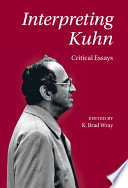Buy Environmental Microbiology for Engineers 3rd Edition PDF ebook by author Volodymyr Ivanov – published by CRC Press in 2021 and save up to 80% compared to the print version of this textbook. With PDF version of this textbook, not only save you money, you can also highlight, add text, underline add post-it notes, bookmarks to pages, instantly search for the major terms or chapter titles, etc.
You can search our site for other versions of the Environmental Microbiology for Engineers 3rd Edition PDF ebook. You can also search for others PDF ebooks from publisher CRC Press, as well as from your favorite authors. We have thousands of online textbooks and course materials (mostly in PDF) that you can download immediately after purchase.
Note: e-textBooks do not come with access codes, CDs/DVDs, workbooks, and other supplemental items.
eBook Details:
Full title: Environmental Microbiology for Engineers 3rd Edition
Edition: 3rd
Copyright year: 2021
Publisher: CRC Press
Author: Volodymyr Ivanov
ISBN: 9780429317156, 9781000258585
Format: PDF
Description of Environmental Microbiology for Engineers 3rd Edition:
Emergency Characterization of Unknown Materials is fully updated to serve as a portable reference that can be used in the field and laboratory by workers who are responsible for a safe response to and management of unknown hazardous materials. As with the first edition, the book emphasizes public safety and the management of life safety hazards, including strategies and emerging technologies to identify the hazards presented by an unknown material. When responding to a hazardous material emergency involving an unknown substance, firefighters and HAZMAT teams are primarily interested in protecting public safety. The book details risk analysis procedures to identify threats and vulnerabilities, analyzing them to determine how such risks can be eliminated or reduced. If an unknown material can be identified with a high degree of confidence, that can considerably change the response, and measures to be taken. In addition, the book covers practical field applications with updated and additional examples of field instruments. The hazard identification methods presented are intended for use by frontline workers. The test methods presented involve manipulation of small sample amounts – using, literally, a hands-on approach. The three technologies used by first responders and military personnel to identify unknown chemicals, Raman spectroscopy, FTIR spectroscopy and high-pressure mass spectroscopy, are covered in depth. Features Presents how to identify unknown materials and, if identification is not possible, to characterize the hazards of the material Offers practical examples to introduce new first responders to hazardous materials response Provides up-to-date field applications of the latest developments in commercially available instrumentation Details practical sample manipulations to help the reader successfully identify materials with popular high-end instrumentation Includes several examples of spectra and describes ways in which the reader can utilize data to inform decision making New coverage to this edition includes a chapter and content that focuses on sample manipulation and separations using instruments developed and revised since the first edition was published. These sample manipulations may be performed in the field with a very simple toolkit, which is fully outlined and explained in detail. Identifying the hazards of the unknown substance is essential to plan for response, contingencies and sustained actions. As such, Emergency Characterization of Unknown Materials will be a welcome and essential resource to all response and safety professionals concerned with hazardous materials.





